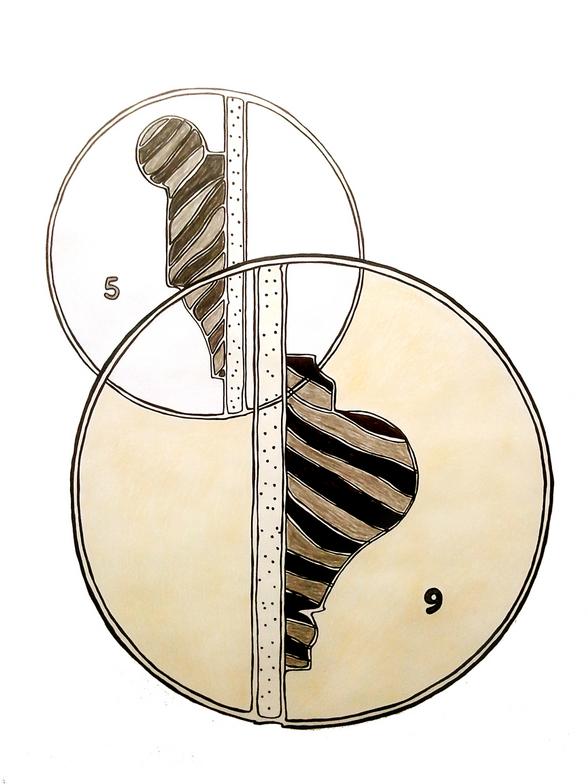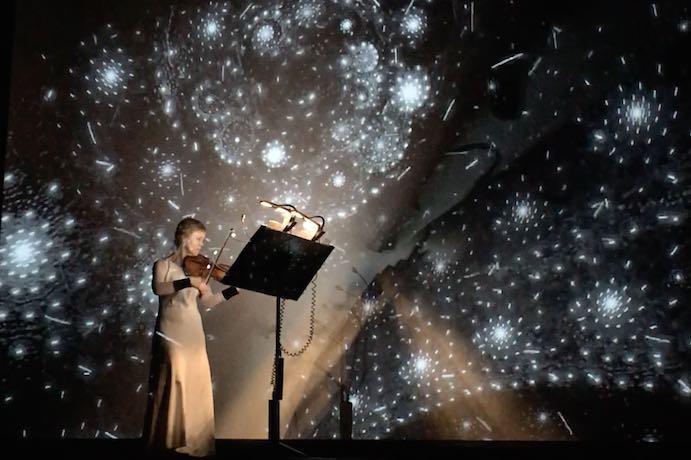Ektoras Binikos Studio
ektorasbinikos@gmail.com
SPENCERTOWN ACADEMY ARTS CENTER
For Immediate Release
EKTORAS BINIKOS “AXIS MUNDI”
July 30, 2011 – August 27, 2011
Opening Reception: Saturday, July 30th, 6-8 pm
The Spencertown Academy Arts Center is pleased to announce "AXIS MUNDI", an exhibition by Ektoras Binikos, which will open on Saturday July 30th and be on view through Saturday August 27th, 2011. The exhibition will feature new works on paper in the main East Gallery, as well as a sculpture piece and a mural conceived specifically for the space. The West Gallery Room will host his 1998 video "where is alice?” together with 5 new graphite drawings from the same series.
Known for the diversity of his artistic activities, having experimented with various media - drawing, installation, video and photography - Binikos has described his art as "a voyage through the circuitous route but nevertheless limited paths of time." "My creative life is a performance and a practice of becoming through the insertion of contemporary gestures. It is a temporal affair — a process in time."
Axis Mundi (Navel of the World), the connection between heaven and earth, also represents the place where the four points of the compass come together. This is an ambitious installation, starting at the West Wall of the Main Gallery with "Nehushtan", the serpent of salvation (Book of Numbers 21:6-9) that also symbolizes cosmic energy. "Nehushtan" is conceived as a pattern for a stained-glass window to symbolize the penetration of the divine light of the sun, which illuminates with its ethereal and transient rays the bridge between heaven and earth.
The installation continues on the North wall with the diptych "Bonjour" and "Bonne Nuit": these two grinning skulls printed on black paper as though lit by the moon (the feminine counterpart of the Sun), with the words Bonjour and Bonne Nuit written on them, refer to an extensively used memento mori symbolizing man’s limited time on earth and inevitable return to dust. They become visible only when your face comes close enough to fill almost the entire periphery of the skull, so that the living face and the skull mirror each other, fitting and interacting in perfect synchronicity as the words also come into a full focus.
On the same line there is a third drawing depicting a dignified Victorian lady holding a parasol - a precursor to the last works of the exhibition. Perhaps she is the Queen of the Night from Mozart’s Magic Flute, protecting herself from the effects of the sun’s rays or obstructing the sun to create the night. The parasol’s mystical significance is also a link between heaven and earth and is further compounded by its shape: its canopy is reminiscent of the sun and of the vault of the heavens, while its shaft acts as an Axis Mundi.
Next on the same wall is on view his drawing “Petite Liturgy” from his series Celestis. There inside a hexagon shape form, a visual pattern covers the entire surface. (Reproduced from D.Marr 1982.) When looking at the images, we notice a change in pattern at approximately three-second intervals: in its search for order, the mind structures what it perceives and interprets the image in various ways. Binikos employs a sensory experience involving our central nervous system to allow the work to be in constant interaction with the viewer. Within the hexagon there a Necker’s cube, an image that can be visually interpreted in two ways- and bears testimony to the actively searching nature of our perception.
On the East Wall from left to right are two drawings from his series "Celectis": a cube and an obelisk, the obelisk (Alexander-Helios) divided in two with the upper part resembling a Bishop’s Miter. The choice of the cube to hold the everlasting changing pattern evokes the anchor maintaining the order of the universe, while the obelisk acts as a direct connection between earth and sky. The Miter symbolizes the ultimate authority of the Sun over life (the base of the obelisk). On the same line there is a third drawing (Cleopatra- Selene) depicting an Egyptian female profile (?) She is the female counterpart of the (Alexander- Helios) his sister, perhaps the moon.
The last piece on the east wall is a diptych of the two fantastical portals that lead (according to the artist) from the otherworld. The numbers shown are the artist’s month and day of birth; the circles, having neither beginning nor end, represent the never–ending cycle of life and death.
In the middle of the gallery at the exact center point of the room is the sculpture "Psycho-pomp" (soul-guide), echoing the stone herms of ancient Greece. (Stone herms were placed at crossroads, symbolizing the role of Hermes as mediator between the two worlds.)
Lastly, on the south wall of the main gallery Binikos presents a mural conceived specifically for the space: "Another Heavenly Day" (the opening line of Samuel Becket’s play "Happy Days", in which Winnie, the main character, dreams that she will "simply float up into the blue … And that perhaps some day the earth will yield and let me go, the pull is so great, yes, crack all round me and let me out").
Dark Music Days 2016 Recap
Harpa, Reykjavík, Iceland.
American composer Merrill Clark’s piece The Sorceress, a multi-movement work written for Sigurjónsdóttir, brought the program into furious overdrive. During The Sorceress, in which Clark’s whimsical and intricate take on Baroque dance-structures produced hazardous virtuosic expression, a huge 20×20 foot backdrop displayed Greek artist Ektoras Binikos’ psychedelic visual landscapes of fractal universes and Fibonacci spirals, sending the neocortex into swirling kaleidoscopic metamorphoses. This engaging and challenging work was a fantastic glimpse into some far away future.
- Gavin Gamboa March 3, 2016 ( I CARE IF YOU LISTEN MAGAZINE)


